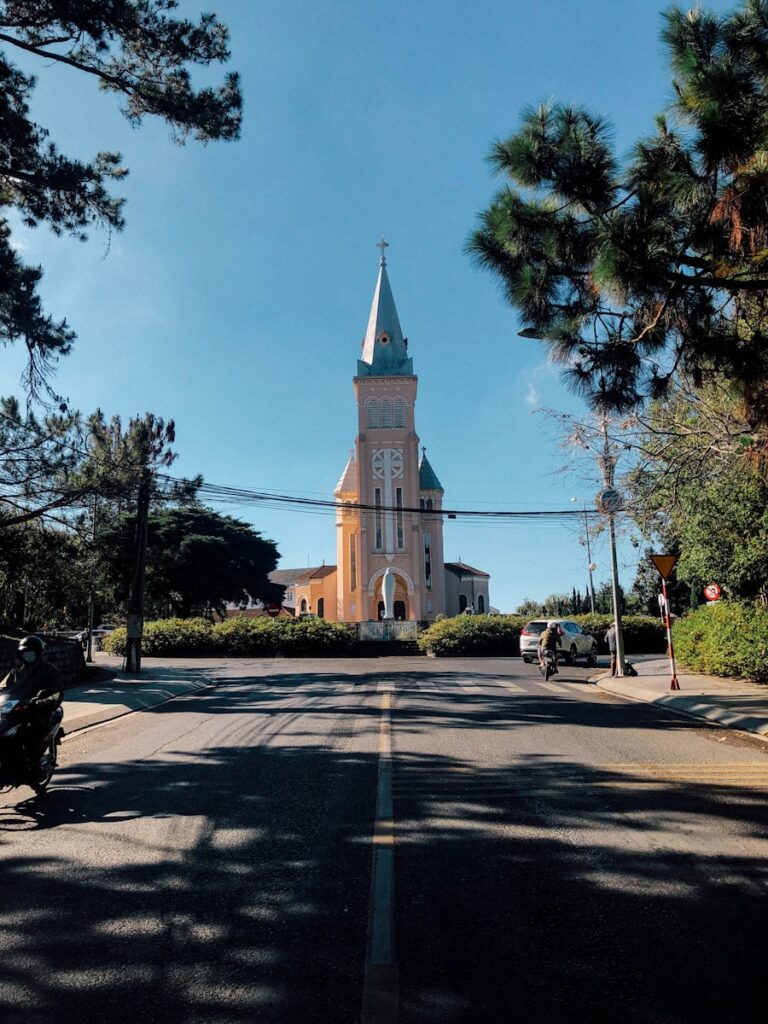Café Tùng: A Quiet Love Song in the Heart of Đà Lạt
When the French first set foot in Đà Lạt, they brought more than their architecture and elegance. They brought their coffee. And over time, the gentle mountain city filled with cafés—some stylish, some rustic, each with its own charm. But tucked quietly among them, almost unnoticed unless you knew where to look, is Café Tùng. It’s not flashy. It doesn’t clamor for attention. But somehow, it lingers in your memory like a soft tune playing on a rainy afternoon.
Café Tùng has stood for over fifty years, a witness to Đà Lạt’s changing rhythms. Yet within its small walls, time seems to pause. The outside world may hustle past Hòa Bình Market, but step through the glass door and you’ll find something almost forgotten—a kind of stillness. The building is modest, unremarkable on the outside. A narrow balcony stretches just a meter or so. Its wooden-framed windows look like they belong to another era.
And once you walk in, that feeling only deepens. The space is small, the tables and chairs sit close together like they’re whispering secrets to one another. There’s a quietness in the air, helped by soft music and the warm touch of aged leather chairs and wooden tabletops. It doesn’t try to impress. It doesn’t need to.
The story of Café Tùng began in 1955 with a couple, Trần Đình Tùng and Lê Thị Giác. They started with a tiny kiosk beside Ngọc Lan Cinema, playing vinyl records for passing guests. Back then, the street that is now Nguyễn Chí Thanh was lined with similar coffee stands. Tùng’s spot was just at the foot of the stairs leading up to the market—right where Nam Giao Café stands today. Soon after, they moved next to the market, and in 1961, they bought the little house where Café Tùng still lives.
Mr. Tùng wasn’t a businessman chasing wealth. He was an artist at heart. His other café, Domino, was for everyday folks. But Tùng—this space—was where the dreamers gathered. It was where words floated in the air, and where the scent of freshly brewed coffee lingered like a poem.
For a few years after 1975, the café closed, lost its name, lost a little of its soul. But by the mid-80s, it had returned—still called Tùng, still standing quietly for those who remembered. The coffee had its own flavor, rich and unforgettable. Not because of any secret ingredient, but because of care. Love. Craft.
Mr. Tùng had a ritual. He hand-picked the ripest cherries, letting the beans age for two whole years until they showed just the faintest signs of wear—what locals called “sạn.” Only then were they roasted in butter imported from France and a dash of rum. It was labor-intensive, not very profitable. But he believed good coffee should be made with soul, not shortcuts. Today, his daughter, Trần Thị Thanh Mỹ, still follows his method, though with more modern ingredients. It’s not exactly the same, but the heart is there.
Yet the magic of Café Tùng was never just in the coffee. It was in the music, the atmosphere, the way it made you feel. Mr. Tùng loved beauty—in sound, in light, in stillness. French songs by Adamo, Christophe, and Françoise Hardy floated through the air. The Beatles, the Rolling Stones, Trịnh Công Sơn… You didn’t just drink coffee here. You listened. You remembered. You dreamed.
And somehow, that spirit never faded. The music still plays—though on CDs now. New melodies mix gently with old ones, like old friends catching up after years apart. The same painting hangs on the wall—a Picasso reproduction, bought from a struggling young artist back in 1962. Large paintings didn’t sell well then. They were expensive, hard to carry. But Mr. Tùng saw beauty and bought it anyway. That was who he was.
So many artists passed through here. Trịnh Công Sơn taught in Lâm Đồng and often stopped by Café Tùng. He always sat in the same seat—just across from the cashier. That was his spot. It was here he met Khánh Ly for the first time, before either of them became legends. Painters like Đinh Cường and Như Ý came here too, along with modern photographers and sculptors. They came not for glamour, but for silence. For memory. For that soft, persistent beat of the past that still echoes inside these walls.
Even now, people return. Locals. Tourists. Artists. Lovers. Friends. Some come for the coffee, some for the songs. Some for a moment that only lives inside them. It’s a place where time doesn’t chase you, where you don’t feel rushed. It’s quiet, but not empty. Simple, but full. People don’t just sit here. They linger.
Café Tùng can’t be exactly what it once was. Nothing ever is. But it still carries the same warmth. The coffee is simple and priced modestly—just 10,000 đồng a cup. The staff, mostly family, treat you with the same old-fashioned courtesy. Years ago, waiters wore white shirts and black ties, chosen for their age and their grace. They dried every cup until it gleamed. Today, that spirit lives on in different ways. Still polite. Still gentle. Still deeply human.
Maybe that’s why Café Tùng remains. In a world rushing forward, it offers a rare gift: the chance to sit still, sip slowly, and remember who you are. It’s not just a café. It’s a memory wrapped in music and steam, hidden in the quiet heart of Đà Lạt.




